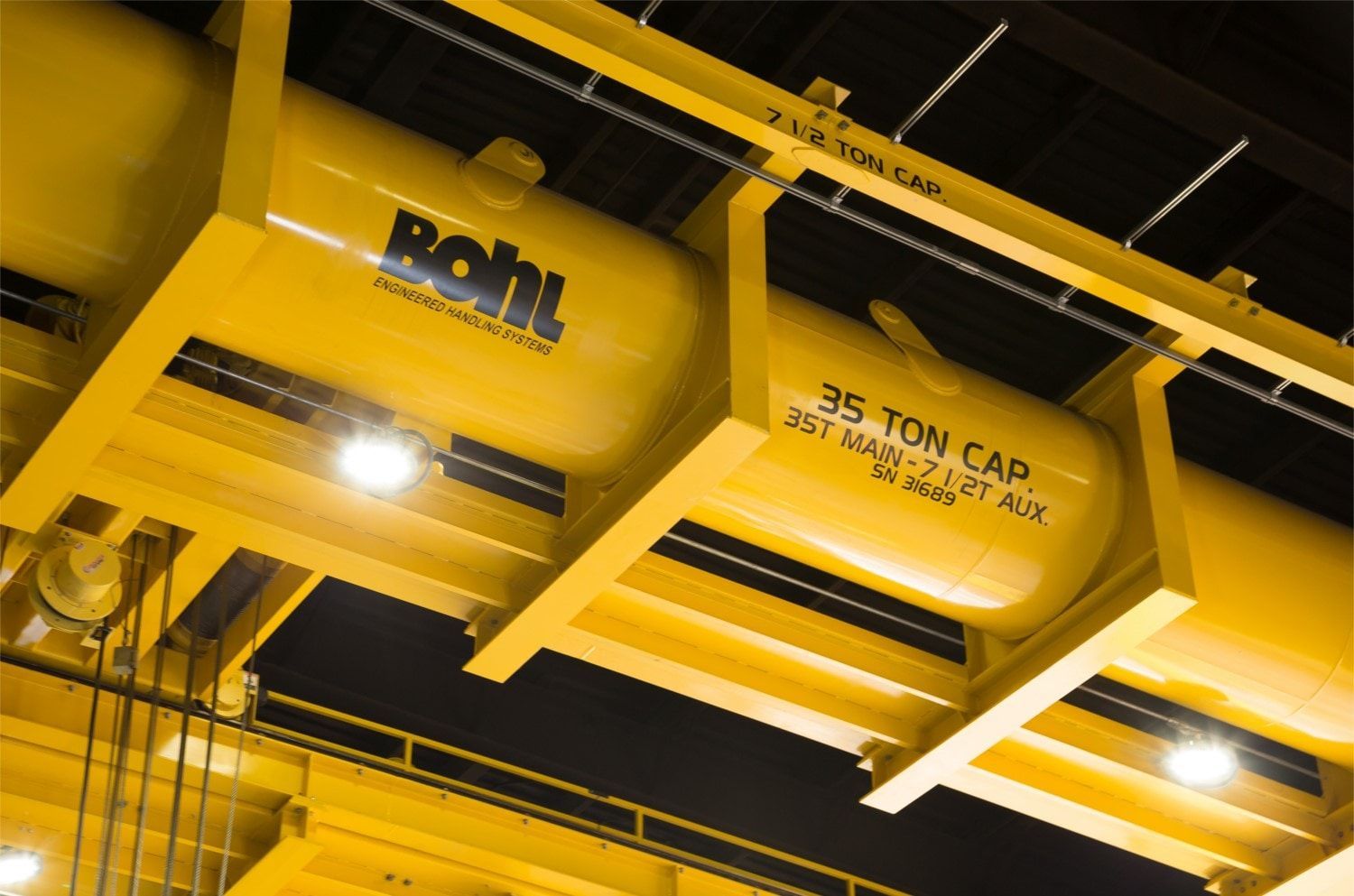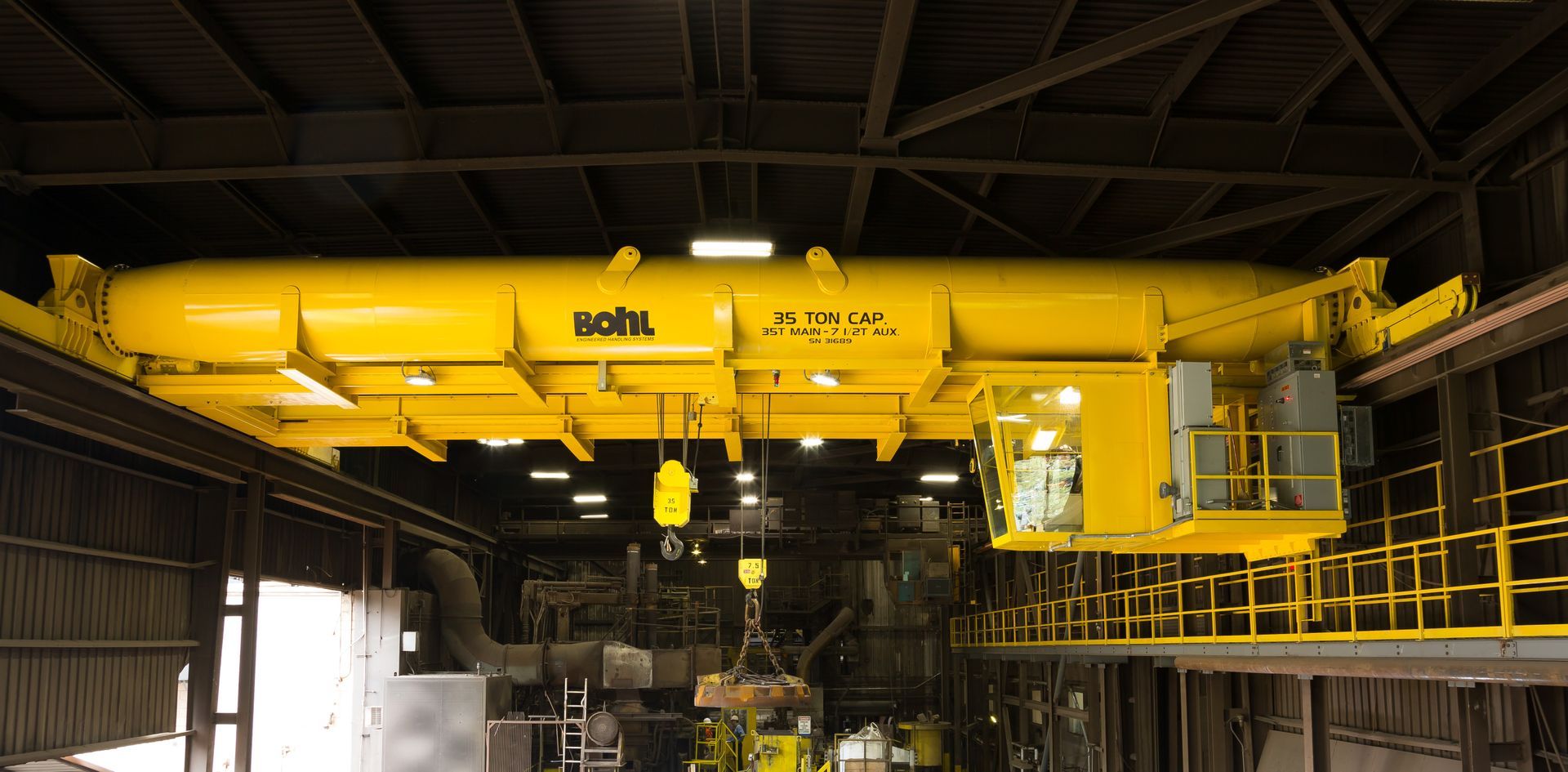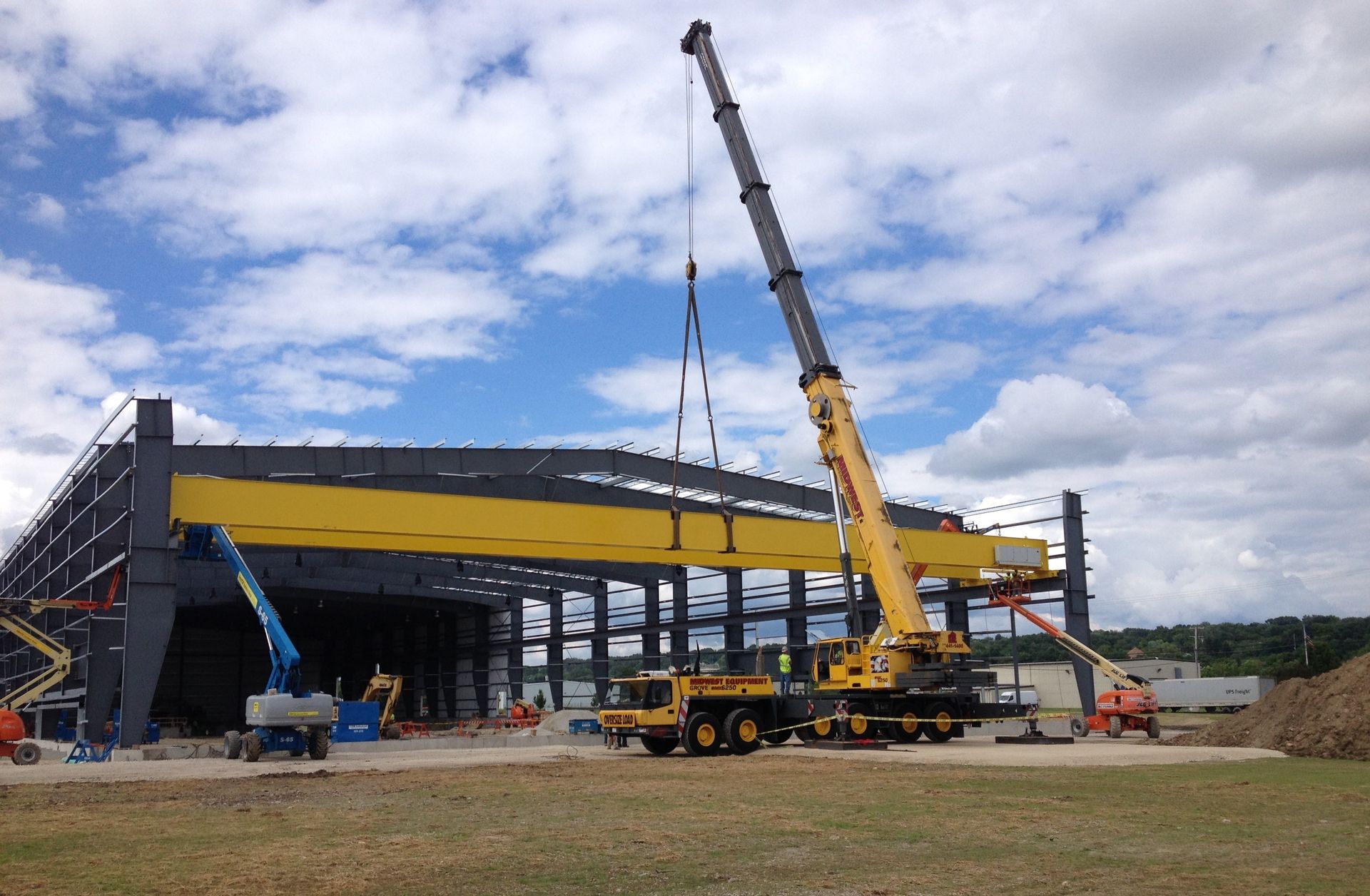Overhead Bridge Cranes
Typical Applications
Standard Cranes
- 5-ton crane for a fabrication shop
- 30-ton crane for a steel service center
Workstation Cranes
- 1/8-ton crane handling automotive parts in a production operation
Engineered Cranes
- Hot metal pouring cranes
- Magnet cranes
- Die turning cranes
- Automated pick and place cranes
Styles
Single or Double Girder Bridges
- Advantage of single girder is lower price
- Advantages of double girder are higher available capacity and increased hook height
Top-Running or Under-Running
- Refers to whether the crane runs on top of fixed beams or whether it runs on the bottom flange of a beam
- Under-running is sometimes called underhung
- Cranes can be designed to run on standard dual-runways or three or more runways
Gantry Cranes
- Motorized
- Double-leg
- Semi-gantry
Construction
- Top-running are generally built from structural shapes such as WF beams, S beams or box girders
- Under-running can be structural shapes or patented track
- Common patented tracks manufacuturers include Cleveland Tramrail, Louden, Spanmaster, Trambeam, and TC American
Capacities and Spans
- All capacities up to 100 tons or greater
- All spans up to 100 ft. or greater
Duty Cycles
- CMAA Class A,B,C,D,E,F
Enhancements or Accessories
- Special close clearance designs to gain maximum hook height or maximum clearances
- Cantilever bridge or trolley to allow hoist hook to reach more difficult locations
- Variable speed, inching, and remote controls
- Cabs
- Below-the-hook devices, multiple hooks
- Rotating and special trolleys for manipulator arms and grabs
Runways
Typically constructed of steel beams plus a steel support system, either inside or outside a building. Top-running cranes typically run on a rail section that is fastened to the top of the runway beam. Common fastening methods are j-bolts and welded or bolted clips. Special engineered fastening systems may include a cushioning material between the rail and the steel beam for heavy duty or special applications. Support systems consist of columns or support brackets from existing columns. Runways have assorted bracing techniques either to the building or to floor level. Support columns may rest on the concrete floor or foundations. May require unique designs to fit into challenging locations and/or support other loads. Runways are often included by building supplier as part of new building steel framework.



